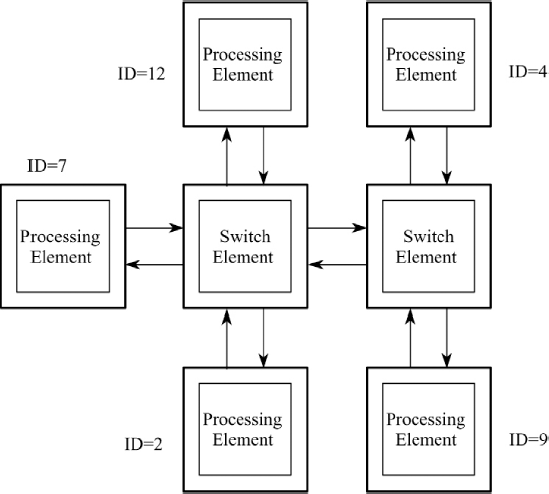6.2. SWITCH-BASED SYSTEMS
As has been discussed, a RapidIO system will typically be organized around switches. Figure 6.1 shows a small system in which five processing elements are interconnected through two switches. Systems such as this can be built today with available RapidIO-based processor and switch products. A packet sent from one processing element to another is routed through the interconnect fabric comprised of the switches by interpreting the transport fields. Because a request usually requires a response, the transport fields include both the destination as well as the source device ID for the packet. The source device ID can be used to determine the return path to the requestor.
Figure 6.1. A small switch-based system

Figure 6.2. A complex switch-based system

Figure 6.2 shows a more complex switch-based system. Here there are multiple line cards, denoted by the numbers 1–24. Each line card contains multiple processing elements, connected together using RapidIO. The line cards are connected to one another through a multi-level switch hierarchy that offers multiple paths between devices. These multiple paths offer additional system bandwidth and could also offer redundant data paths between devices. This particular system offers connectivity for up to 120 devices ...
Get RapidIO: The Next Generation Communication Fabric For Embedded Application now with the O’Reilly learning platform.
O’Reilly members experience books, live events, courses curated by job role, and more from O’Reilly and nearly 200 top publishers.

